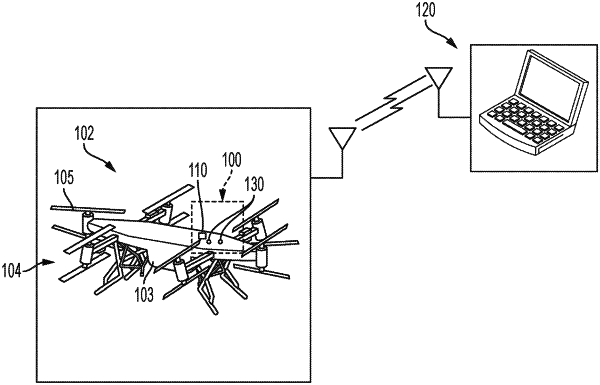| CPC G08G 5/0056 (2013.01) [B64C 39/024 (2013.01); G01S 13/913 (2013.01); G05D 1/0055 (2013.01); G05D 1/102 (2013.01); G08G 5/0039 (2013.01); B64U 2201/20 (2023.01)] | 20 Claims |

|
1. A system for contingency landing an unmanned aerial vehicle (UAV) comprising:
one or more sensors configured to detect a position of the UAV; and
a command module comprising a control unit having one or more processors configured to execute instructions stored in memory to perform functions of:
receiving a mission profile, the mission profile comprising a travel path mapped out in multidimensional space over time for the UAV from an origin to a destination, a plurality of first boundaries, each having a three-dimensional form and encompassing a respective different segment of the travel path, a second boundary having a three-dimensional form and encompassing an entirety of the plurality of first boundaries, and a plurality of contingent landing sites, each contingent landing site determined based on surface characteristics identified in a terrain map;
sending instructions to the UAV to fly according to the mission profile;
determining, via the one or more sensors, a position of the UAV relative to a desired position corresponding to the travel path and relative to the plurality of first boundaries and the second boundary, wherein the three-dimensional form of the second boundary moves along the travel path with reference to the desired position;
responsive to determining that the UAV is a threshold distance away from the desired position and intersects a portion of one of the plurality of first boundaries, sending instructions to the UAV to land at a corresponding one of the plurality of contingent landing sites; and
responsive to determining that the UAV intersects a portion of the second boundary, sending instructions to the UAV to land immediately on a ground surface located below the UAV and outside the plurality of contingent landing sites.
|